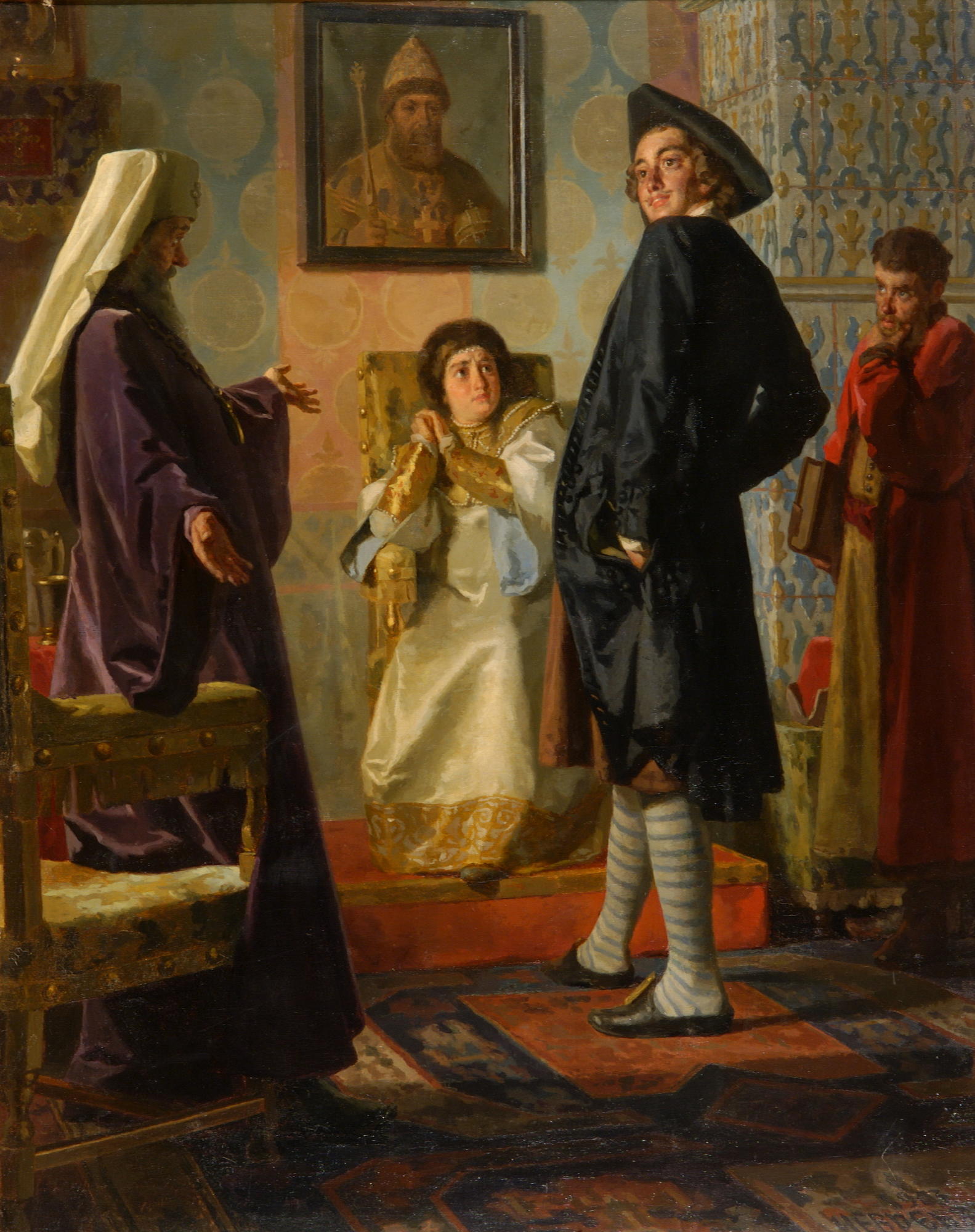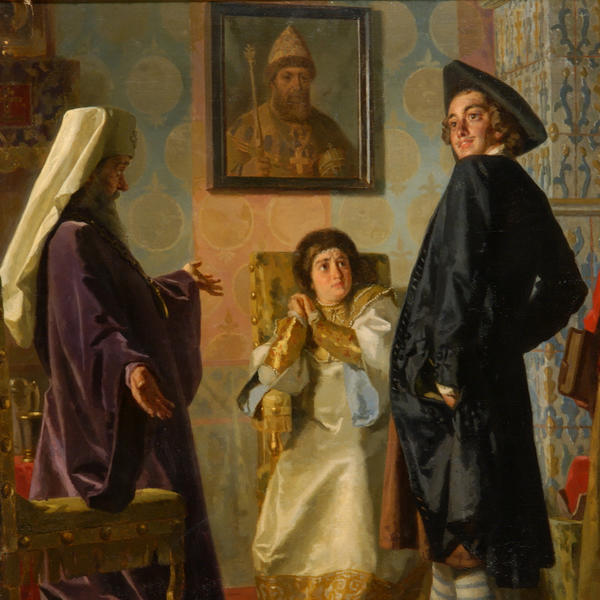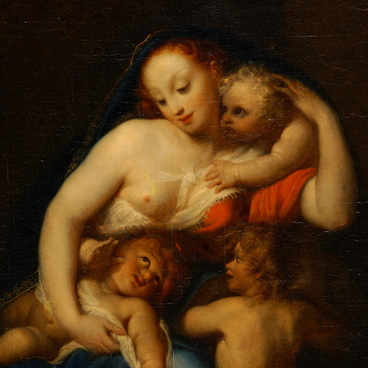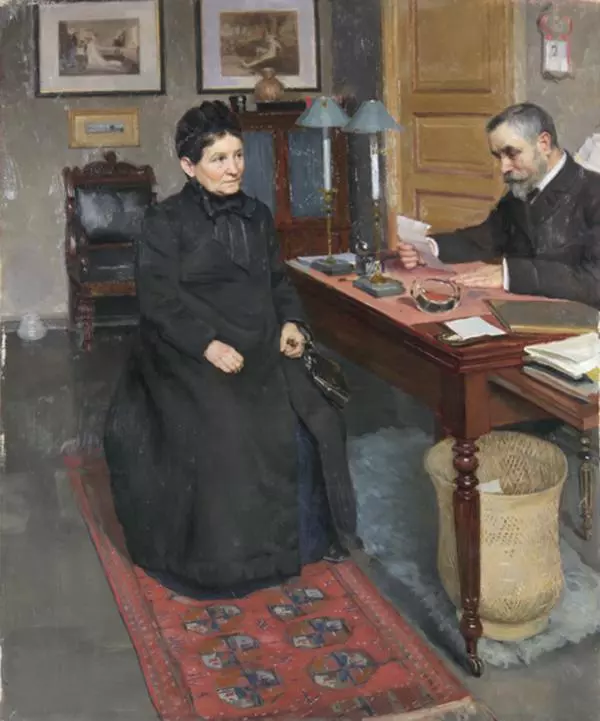Nikolai Nevrev, a Russian artist, painted Peter I in front of His Mother Tsaritsa Natalya, a historic painting of his, in 1903 — before his tragic death. That year Russia celebrated the 290th anniversary of the reign of the Imperial House of Romanov. One of the most popular subjects in art was Peter I and his reformatory activity.
Nikolai Nevrev entered the history of Russian art as a master of genre painting and historical painting. The interest in the human personality and inner feelings that was characteristic of the Russian culture of the 19th century led Nevrev to the Society for Travelling Art Exhibitions, a member and active participant of which he became in 1881. Interest in the historical genre was aroused in Nevrev by a Russian history painting competition announced by the Society of Art Lovers in connection with the opening of the Russian Historical Museum in 1872. Nevrev painted a number of historical paintings that made him famous.
Like the majority of the Itinerants, Nevrev interpreted the national-historical subjects in social and psychological terms, using genre painting techniques. The painting from the collection of the Stavropol Krai Museum of Fine Arts dedicated to Peter I, is full of inner energy.
Nevrev created a deep dramatic collision based on the psychological interaction of the characters. Peter shows his mother, Tsaritsa Natalya Kirillovna, Patriarch Adrian, and his teacher Nikita Zotov a foreign costume. His camisole, triangular hat, striped stockings and buckle shoes cause their mixed reaction. The Tsaritsa is looking at her son with reproach, the patriarch spread his hands in bewilderment, Zotov is rubbing his chin thoughtfully.
The entire scene has been carefully thought over by the author. With details, Nevrev reminded the viewers about the cautious attitude of the pre-Peter Russia to the western trends. Every detail is important — facial expressions, looks, postures and gestures, costumes, and interiors. A portrait of Alexei Mikhailovich with attributes of royal power is hanging on the wall as a symbol of the time-honored principles.
All that is confronted by the tall, straight figure of young Peter, boldly defying patriarchal relics of the past. He often visits the German Quarter, but hasn’t been abroad yet — the Tsar’s ukases and the project of the new capital are still a long way off going by the subject of the painting. But by demonstrating his European outfit, Peter demonstrates his future reform initiatives. By representing this confrontation in the composition of the painting, Nevrev preserved the feeling of the forthcoming global changes.
Nikolai Nevrev entered the history of Russian art as a master of genre painting and historical painting. The interest in the human personality and inner feelings that was characteristic of the Russian culture of the 19th century led Nevrev to the Society for Travelling Art Exhibitions, a member and active participant of which he became in 1881. Interest in the historical genre was aroused in Nevrev by a Russian history painting competition announced by the Society of Art Lovers in connection with the opening of the Russian Historical Museum in 1872. Nevrev painted a number of historical paintings that made him famous.
Like the majority of the Itinerants, Nevrev interpreted the national-historical subjects in social and psychological terms, using genre painting techniques. The painting from the collection of the Stavropol Krai Museum of Fine Arts dedicated to Peter I, is full of inner energy.
Nevrev created a deep dramatic collision based on the psychological interaction of the characters. Peter shows his mother, Tsaritsa Natalya Kirillovna, Patriarch Adrian, and his teacher Nikita Zotov a foreign costume. His camisole, triangular hat, striped stockings and buckle shoes cause their mixed reaction. The Tsaritsa is looking at her son with reproach, the patriarch spread his hands in bewilderment, Zotov is rubbing his chin thoughtfully.
The entire scene has been carefully thought over by the author. With details, Nevrev reminded the viewers about the cautious attitude of the pre-Peter Russia to the western trends. Every detail is important — facial expressions, looks, postures and gestures, costumes, and interiors. A portrait of Alexei Mikhailovich with attributes of royal power is hanging on the wall as a symbol of the time-honored principles.
All that is confronted by the tall, straight figure of young Peter, boldly defying patriarchal relics of the past. He often visits the German Quarter, but hasn’t been abroad yet — the Tsar’s ukases and the project of the new capital are still a long way off going by the subject of the painting. But by demonstrating his European outfit, Peter demonstrates his future reform initiatives. By representing this confrontation in the composition of the painting, Nevrev preserved the feeling of the forthcoming global changes.







